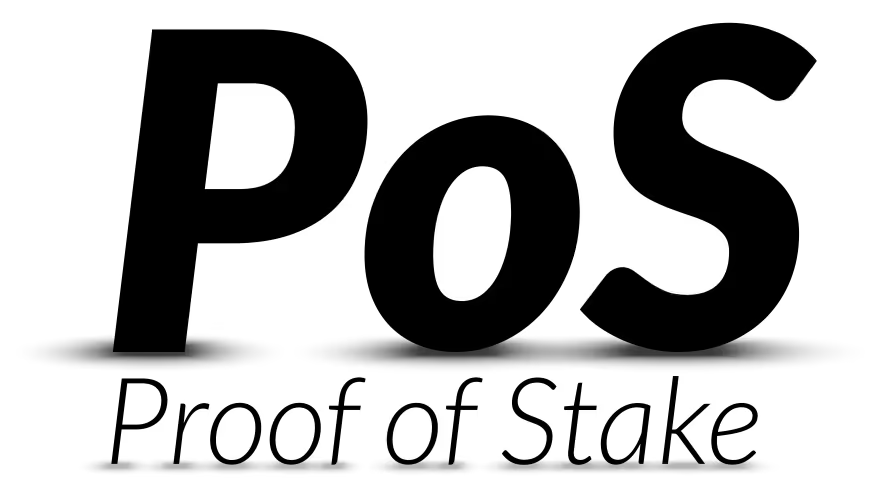3 Short Key Takeaways
Innovations like liquid staking and restaking are redefining how users participate in decentralized networks.
Proof of Stake secures blockchains through token staking, replacing energy-intensive mining with efficient validation.
By 2025–26, PoS dominates blockchain ecosystems for its sustainability, scalability, and security.
What Is Proof of Stake? Understanding Blockchain Consensus in 2025–26
In 2025, the global blockchain industry stands at a pivotal point. Energy-efficient, scalable, and secure — Proof of Stake (PoS) has emerged as the backbone of modern blockchain consensus. After Ethereum’s successful transition from Proof of Work (PoW) in 2022, PoS systems have matured into the dominant model for verifying transactions, securing networks, and governing decentralized ecosystems.
Yet for many, the concept remains abstract. What exactly is Proof of Stake? How does it differ from Proof of Work, and why has it become the consensus mechanism of choice for blockchain projects heading into 2026?
This article unpacks the mechanics, evolution, and implications of Proof of Stake — and explains why understanding it is essential to navigating the next era of Web3.
The Basics: What Is Proof of Stake?
Proof of Stake is a blockchain consensus mechanism — the system that determines how transactions are verified and added to a decentralized ledger without a central authority.
In Proof of Work (PoW) systems like Bitcoin, miners compete using computing power to solve cryptographic puzzles. In contrast, Proof of Stake selects validators based on how much cryptocurrency they “stake” (lock up) as collateral. The larger the stake, the higher the chance of being chosen to validate transactions and earn rewards.
This design eliminates the need for energy-intensive mining, replacing it with a system where network participants secure the blockchain through financial commitment rather than computational effort.
In 2025, most next-generation blockchains — including Ethereum, Cardano, Solana, Avalanche, and Polkadot — operate on variations of Proof of Stake. Each adapts the model slightly to balance performance, decentralization, and security.
At its core, Proof of Stake ensures three things:
- Security: Validators must act honestly or risk losing their stake.
- Efficiency: Validation is faster and more sustainable than PoW mining.
- Scalability: PoS systems can handle higher transaction volumes and lower fees.
How Proof of Stake Works in 2025
While each network implements Proof of Stake differently, the fundamental process remains the same:
- Staking: Users lock up a certain amount of tokens to become validators.
- Selection: The protocol randomly selects a validator to propose and confirm the next block.
- Validation: Other validators verify the block’s accuracy and reach consensus.
- Rewards: The validator receives staking rewards (often in the network’s native token).
- Slashing: Validators that act maliciously lose part or all of their staked assets.
The amount of staked cryptocurrency serves as both skin in the game and security guarantee. Because validators risk their funds, they have a strong incentive to behave honestly.
In 2025, this system has been enhanced by technologies like restaking (pioneered by EigenLayer on Ethereum), liquid staking, and delegated staking, which let users participate without directly managing validator nodes.
From Energy Savings to Global Adoption
When Ethereum transitioned to Proof of Stake in 2022’s “Merge,” it reduced the network’s energy consumption by more than 99.9%. This milestone reshaped how the public — and policymakers — viewed blockchain sustainability.
By 2025, Proof of Stake has become the global norm for new blockchain networks, largely because it solves two of crypto’s most pressing issues: energy efficiency and scalability.
1. Energy Efficiency and Environmental Responsibility
PoW mining once consumed energy equivalent to small countries. PoS, by contrast, relies on lightweight validation processes. For eco-conscious investors, institutions, and governments, this shift has made blockchain technology more acceptable.
In 2026, many jurisdictions even favor PoS networks through green blockchain incentives and sustainability certifications — further driving adoption.
2. Scalability and Transaction Costs
Because PoS networks don’t require massive mining computations, they can process transactions faster and cheaper. Ethereum Layer 2 networks like Arbitrum and Optimism rely on PoS validators to confirm rollups, allowing thousands of transactions per second at a fraction of the cost of earlier systems.
The result is a smoother user experience across DeFi, NFTs, and Web3 applications — a critical factor as blockchain adoption expands into mainstream industries.
Variations of Proof of Stake in 2025
Proof of Stake isn’t a one-size-fits-all model. By 2025, multiple variants have emerged, each designed to optimize certain aspects of performance and governance.
Delegated Proof of Stake (DPoS)
Used by networks like EOS and Tron, DPoS introduces voting mechanisms where token holders elect a small group of validators. This enhances speed but can reduce decentralization.
Nominated Proof of Stake (NPoS)
Adopted by Polkadot, this version allows users to nominate trusted validators, blending decentralization with efficient governance.
Hybrid and Restaking Models
Ethereum’s emerging restaking economy, built around EigenLayer, allows stakers to secure multiple protocols simultaneously. This boosts network interoperability and efficiency — a major innovation defining 2025–26.
Liquid Staking Derivatives (LSDs)
Services like Lido, Rocket Pool, and Coinbase Staking have made it easier for everyday users to participate in PoS without locking up assets. These platforms issue “liquid tokens” representing staked funds, providing flexibility and liquidity in DeFi ecosystems.
Together, these variations demonstrate PoS’s adaptability — it’s not just a technology but a design philosophy evolving to meet the demands of a growing decentralized economy.
The Economic and Security Implications
Proof of Stake fundamentally changes how blockchains are secured and how wealth circulates within them.
In PoW, miners sell tokens to cover energy and hardware costs, creating downward price pressure. In PoS, validators often reinvest staking rewards, reducing sell pressure and strengthening network stability.
However, critics note potential risks:
- Wealth Concentration: Large holders can accumulate more rewards, consolidating influence.
- Censorship Concerns: Validators could theoretically collude or comply with government sanctions.
- Technical Complexity: Managing validators and delegation requires strong security practices.
To counter these, 2025–26 has seen innovation in distributed validator technology (DVT) and multi-party computation (MPC), which distribute validation authority and reduce single points of failure. These systems enhance decentralization while preserving the efficiency PoS promises.
Also read: How to Use MetaMask for Ethereum and Layer 2s
Proof of Stake and the Road Ahead
Looking toward 2026, Proof of Stake is evolving beyond just transaction validation. It’s becoming the foundation for on-chain governance, interoperability, and digital identity.
For example:
- Governance: Many DAOs (Decentralized Autonomous Organizations) use PoS-style voting weighted by staked tokens.
- Interoperability: Cross-chain PoS frameworks are emerging, allowing multiple networks to share validators.
- AI and Automation: Smart contracts tied to staking protocols are automating yield optimization and slashing prevention.
As Ethereum and other L2 ecosystems expand, Proof of Stake will anchor not just security but the economic and ethical frameworks of decentralized systems.
In 2026, the model is expected to integrate with zero-knowledge proofs for enhanced privacy and with modular blockchain architectures to optimize scalability even further.
Conclusion: Proof of Stake Defines Blockchain’s Next Era
So — what is Proof of Stake in 2025–26? It’s more than a consensus mechanism; it’s the architecture of a sustainable, scalable, and secure blockchain economy.
PoS has proven that crypto can evolve — from energy-hungry mining operations to efficient, community-driven validation systems. It underpins Ethereum’s future, powers emerging ecosystems like Solana and Polkadot, and serves as the technological standard for new blockchain networks launching today.
Understanding Proof of Stake isn’t just for developers or traders — it’s essential knowledge for anyone participating in the decentralized internet.
As the crypto world moves deeper into 2026, one thing is clear: Proof of Stake isn’t just how blockchains agree — it’s how they endure.




